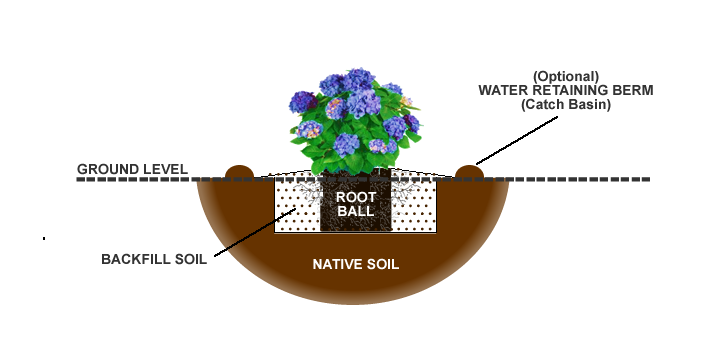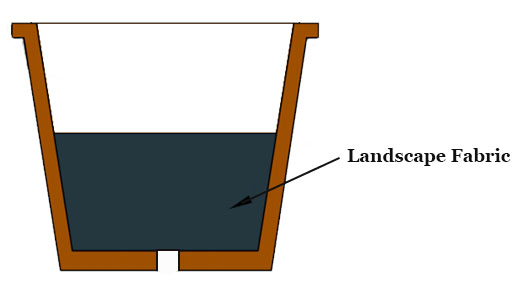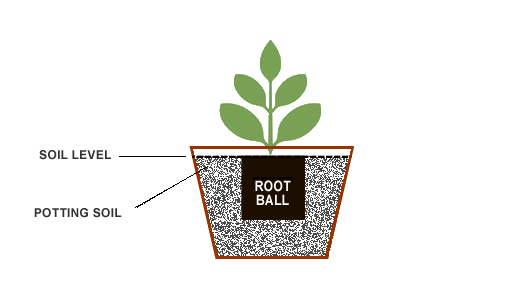Hydrangeas are one of American gardeners favorite summer flowering plants, for good reason. They produce loads of colorful flowers! When planted right and in the right spot, Hydrangeas are very easy to grow and will provide beauty and bountiful color and texture in the landscape for years to come.
Here's a breakdown of what you need to know regarding planting Hydrangeas...
Cultural Preferences
Important: Before choosing a variety of Hydrangea to plant in your landscape or gardens make sure to verify that will grow in your USDA Plant Hardiness Zone. You'll find the USDA Zones listed on every Hydrangea plant page in Wilson Bros Gardens.
Soil
In Ground: Hydrangea are easy to grow in most any moist but well-drained soil of average fertility. As with so many other ornamental shrubs, constantly soggy or wet soil can suffocate the roots causing root rot and other harmful plant diseases. It's a good idea to test soil drainage in the planting area before planting.
In Pots & Containers: Hydrangea growing in pots, planters and other containers will appreciate a moist but well-drained soil. We suggest the use of a quality potting soil or potting mix or, better yet, a 50/50 combination thereof. Make sure the container you are planting in has a drainage hole(s). You can also add 10 to 20 percent perlite or pumice to the soil mix to enhance drainage. To prevent the drainage hole from becoming stopped up with roots or soil, we also suggest lining the bottom interior of the pot with a porous landscape fabric such as weed barrier. If you use gravel or other material in the bottom of the pot lay the fabric over it. Scroll down for detailed container planting instructions.
How To Test Soil Drainage In The Ground
If you are uncertain about soil drainage in the area you intend to plant your Hydrangea, it's well worth taking the time to test the drainage before planting. To test soil drainage, dig a hole 12" wide by 12" deep. Fill the hole with water and let it drain. Then, after it drains, fill it with water again, but this time clock how long it takes to drain. In well-drained soil the water level will go down at a rate of about 1 inch an hour. A faster rate, such as in loose, sandy soil, may signal potentially dry site conditions and possibly a need to add organic matter such as top soil or/or peat moss to help retain moisture. A slower rate indicates poor draining soil and is a caution you need to improve drainage, plant in a raised mound or bed, or look for plants that are more tolerant of wet or boggy conditions.
Soil pH
Hydrangeas grow best in a soil that ranges between 5.0 and 8.0 on the pH scale. Soil pH can effect bloom color on some hydrangeas, specifically mopheads/French hydrangeas and lacecap hydrangeas. Soil pH can effect bloom color. An acid soil will produce one color while an alkaline soil produces a different color. For example, you can turn some varieties of pink Hydrangea to blue by lowering the pH (making it more acid). The flowers of white Hydrangea do not change color regardless of soil pH.
In strongly acid soil (pH below 6) hydrangea flowers turn blue. In alkaline soil (pH above 7) flowers turn pink or even red. In slightly acid or neutral soil (pH 6 to 7), blooms may be purple or a mix of blue and pink on a the same shrub. Keep in mind that some Hydrangea varieties vary in their sensitivity to pH.
Testing Soil pH
Soil pH is a measurement of the alkalinity or acidity of soil and is measured on a scale of 1-14, with 7 as the neutral mark. Any measurement below 7 indicates acid soil conditions, and anything above 7 indicates alkaline. If you're unsure about the pH of your soil, and whether or not it's suitable for growing Hydrangea, it's a good idea to test the soil pH in the planting area. You can quickly test soil pH with an inexpensive soil pH tester probe. To raise the pH (make more alkaline) you can add pelletized limestone to the soil. To lower the pH (make more acid) you can apply Soil Sulfur, Aluminum Sulfate, or Chelated Iron. Adding organic compost to the soil or using compost as mulch can also help to increase acidity and maintain acid soil conditions.
Learn More: What is Soil pH and How To Adjust It?
Hydrangea will tolerate full sun in northern zones and cooler climates but likes some afternoon shade or filtered sun in warmer southern zones. We suggest at least 5 hours of direct sunlight per day for best flowering. Note that oakleaf (H. quercifolia) and peegee (H. paniculata) hydrangea varieties will generally tolerate more sun than the mopheads (H. macrophylla) and other Hydrangea species.
How To Plant Hydrangeas in The Ground
*Scroll down for container planting instructions
Step 1
Start by digging your planting hole at least two to three times as wide and no deeper than the root ball of your hydrangea. The wider the hole the better. Place native soil removed from planting hole around the perimeter of the hole, in a wheel barrow, or on a tarp.
Step 2
Depending on the type, fertility and porosity of the soil in the planting area it might be beneficial to mix in a soil amendment to the native soil removed from the planting hole. When planting in dense clay or poor soil it is beneficial to thoroughly mix in 25 to 50 percent good organic matter, such as composted cow manure, mushroom compost, sand, and/or a good planting mix with the clay soil. When planting in very sandy, quick-draining soil you might want to consider mixing in some top soil, peat moss and/or compost to help retain moisture. When planting in fertile, loamy, well-drained but moist soil there is no need for adding a soil amendment.
Step 3
To remove your Hydrangea from the nursery pot it was growing first squeeze the sides of the container to loosen the root ball. Then very gently try to remove the root ball from the container. If the root ball is stuck in the container it's best to use a cutting tool to cut the container away. After having removed the plant from the container, use your fingers to gently loosen some feeder roots from around the surface of the root ball. Avoid cutting or spreading roots apart.
Step 4
If you are planting in well-drained soil set your Hydrangea in the planting hole so that the top edge of the root ball is at or slightly above ground level (1-inch or so) to allow for settling. If your soil is moderately drained, meaning it drains slowly after rain, the top of the root ball should be 2 to 3 inches above ground level. If necessary, add some backfill soil mixture to the bottom of the hole to achieve proper planting height.
Note: If the soil is poorly drained (constantly soggy or wet) improve drainage, plant the root ball in a raised bed entirely above ground level, or select a different plant species more tolerant of wet soils.

Step 5
After setting your Hydrangea in the planting hole, use one hand to hold the plant straight and your other hand to begin back-filling your soil mixture around the root ball, tamping as you go to remove air pockets. When you have filled the hole to the halfway point you can soak the soil. Then continue back-filling to the top edge of the root ball. If you are planting the root ball higher than ground level taper your soil mixture gradually from the top edge of the root ball to the ground level, as shown in the diagram above. To avoid suffocating your plant, avoid placing any soil on top of the root ball. You can apply mulch after planting.
Step 6 (Optional)
When planting your Hydrangea in a site site far away from a water source you can use remaining soil mixture to build a 2" high water retaining berm (catch basin/doughnut) around the outside perimeter of the planting hole, as shown in the diagram above. This basin will help to collect water from rainfall and irrigation often reducing the need for hand-watering. The berm can be removed after a year or so.
Step 7
Next, deeply water the planting area, including the root ball, to a depth equal to the height of the root ball. For an extra boost, you can water your newly planted Hydrangea with a solution of Root Stimulator, which stimulates early root formation and stronger root development. Root Stimulator reduces plant shock and promotes greener, more vigorous plants.
Step 8
Apply a 1 to 2" layer of cured, shredded or chipped wood mulch or straw mulch around the planting area to conserve moisture and to suppress weed growth. Avoid the use of fresh chipped or shredded wood for mulch until it has cured in a pile for at least 6 months, a year is better. Avoid placing or piling mulch directly against the base of your plant as this could cause the bark to rot.
Container Planting Instructions
Hydrangea growing in pots, planters and other containers will appreciate a moist but well-drained soil. We suggest the use of a quality potting soil or potting mix or, better yet, a 50/50 combination thereof. Make sure the container you are planting in has a drainage hole(s). You can also add 10 to 20 percent perlite or pumice to the soil mix to enhance drainage. To prevent the drainage hole from becoming stopped up with roots or soil, we also suggest lining the bottom interior of the pot with a porous landscape fabric such as weed barrier. If you use gravel or other material in the bottom of the pot lay the fabric over it.
Also make sure to choose a container that is large enough to allow for 2 to 3 years of growth before shifting up to a larger size container. This might mean your planting pot would be 8 inches or more in diameter/width than the root ball of your plant.
Container color will matter as well. Not only will you want to pick a color of container that goes well with the flower and foliage color of your Hydrangea, you'll also want to pick a container that matches the style of your home or other structures and other plants in the surrounding environment.
Step 1
Before filling your container with the soil mix, we recommend lining the bottom with shade cloth or a porous landscape fabric. This will keep the drain holes from becoming stopped up with soil. If you place stones or other materials in the bottom of the pot lay the fabric over it.

Step 2
To remove your Hydrangea from the nursery pot it was growing first squeeze the sides of the container to loosen the root ball. Then very gently try to remove the root ball from the container. If the root ball is stuck in the container it's best to use a cutting tool to cut the container away. After having removed the plant from the container, use your fingers to gently loosen some feeder roots from around the surface of the root ball. Avoid cutting or spreading roots apart.
Step 3
Pour a small amount of your soil mixture in the bottom of the container. Set the plant in the container and make necessary adjustments by adding or removing some soil so that the top edge of the root ball will sit 1/2 to 1" below the rim of the container.

Step 4
Backfill with your potting soil around root ball, tamping as you go, until the level of potting soil is even with the top edge of root ball.
Step 5
Water thoroughly until water starts to drain from the holes in the bottom of the container. Add more potting mix if settling occurs during watering.
Step 6 (Optional)
Apply a 1/2" layer of wood chips or sphagnum moss to soil surface to help conserve moisture.

